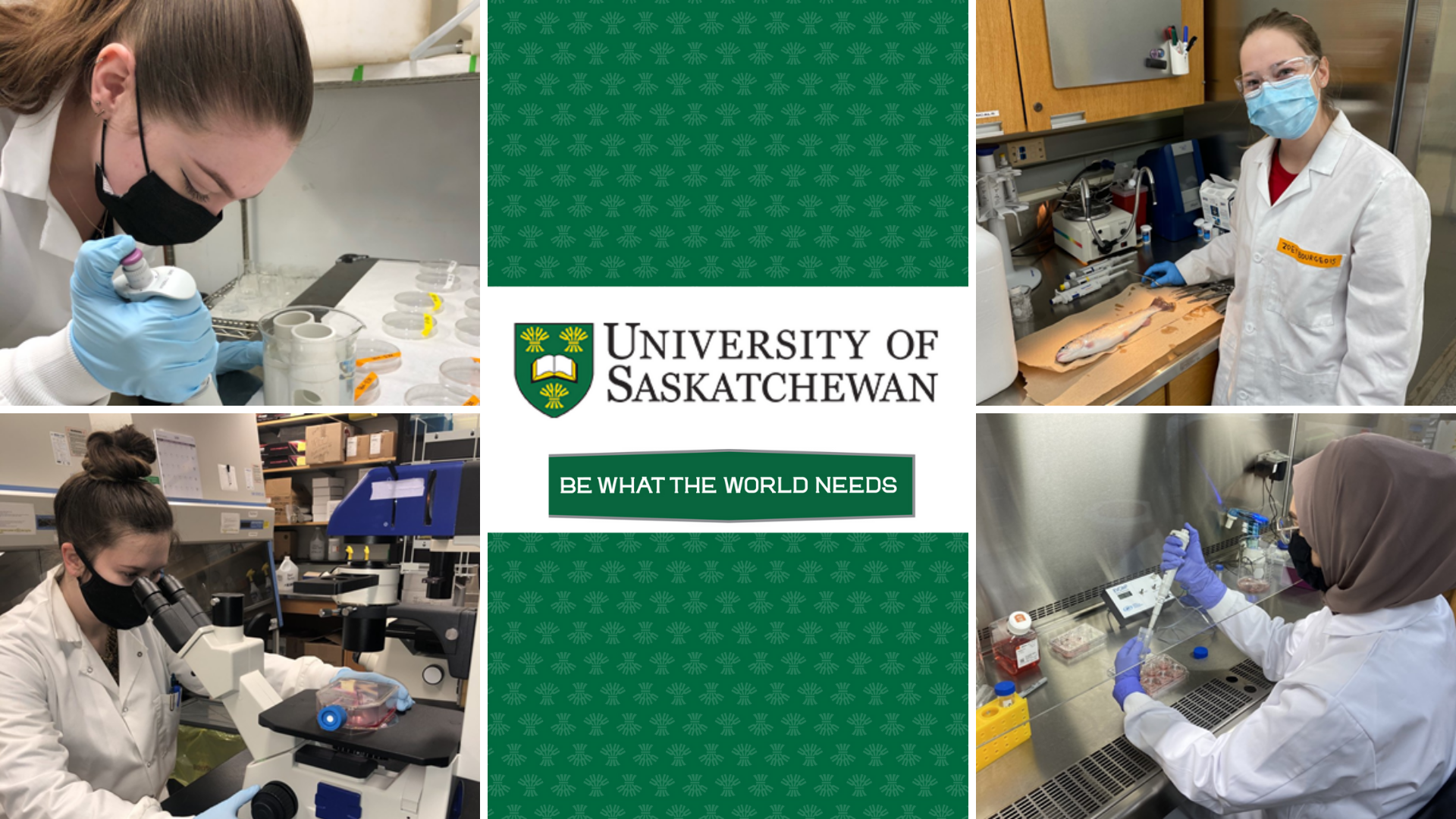
Resilient Women in Toxicology Research
"The lessons and skills I learned in my research project are things that I will carry with me for the rest of my life," says undergraduate research student, Lacy Smith.
By Brooke KleiboerZoey Bourgeois, Romaisa Ismaeel, Summer Selinger & Lacy Smith are fourth year undergraduate students working towards a Bachelor of Science in Toxicology degree. These four female student researchers from diverse backgrounds spent the 2020-21 academic year working on Honours research projects in the field of Toxicology. Summer and Lacy were supervised by Dr. Natacha Hogan (PhD), Associate Professor in the College of Agriculture and Bioresources, and Zoey and Romaisa by Dr. Markus Brinkmann (PhD), Assistant Professor in the School of Environment and Sustainability.
COVID-19 change and uncertainty have proven to be no obstacle for four student researchers in the USask Bachelor of Science in Toxicology program. Zoey Bourgeois, Romaisa Ismaeel, Summer Selinger and Lacy Smith all chose to spend their senior year undertaking the challenge of completing Toxicology Honours projects. These projects required students to develop a research question and literature review, prepare a research proposal, conduct field or lab work, perform data analysis and present their findings. Although the 2020-21 academic year has been riddled with challenges for students, including an adaptation to remote learning, limited access to on-campus resources and an ever-changing global situation, there was still excitement to be found in the world of research. The group who chose to complete Toxicology Honours projects this year consisted entirely of female students with a myriad of research interests.
These students exemplify the importance of women in STEM (Science, Technology, Engineering and Mathematics) fields. According to Statistics Canada, as of 2016, women made up only 34% of STEM bachelor’s degree holders in the nation and only 23% of science and technology workers in the 25-64 age group. At USask, more women than men enroll as students; programs such as Toxicology do an excellent job of recruiting, supporting and retaining women in STEM. The so-called ‘leaky pipeline’ of underrepresentation of women in STEM fields is a feature writ large throughout the professional practice of science-based industries and businesses. As such, USask undergraduate programs such as Toxicology know the importance of encouraging, supporting and celebrating female students who pursue academic and career paths. Zoey, Romaisa, Summer and Lacy are women from diverse backgrounds forging ahead in their scientific field.
The USask Undergraduate Research Initiative interviewed these four students about their research experiences and learned about what taking on a significant research project has contributed to their undergraduate education.
Tenacity in toxicology
Zoey Bourgeois, along with co-authors Jonathan Challis, Jenna Cantin, and Matthew Schultz, and supervisor, Dr. Markus Brinkmann, conducted a project investigating the clearance of antipsychotic medicinal drugs from the perfused livers of juvenile rainbow trout. The study aimed to improve the existing process for studying the effects of biotransformation in aquatic toxicology.
The topic was complex and required numerous trials to set up a physical apparatus that would allow the team to collect the data they needed, while trying to place their work within the existing structure of toxicology research. “Being a researcher requires a lot of patience and tenacity. The thing about research is that the answers aren’t always easy to find. It often requires a lot of digging, reading and analyzing to frame your approach,” Zoey says.
Of course, the COVID-19 pandemic posed a new set of challenges when capacity and time limits were implemented in laboratories. Through it all, Zoey says she could not have done it without her “extremely supportive and encouraging” supervisor. “The maximum capacity limits provided some challenges, as there were only two people allowed in the lab at a time. This [required] lots of verbal troubleshooting and problem solving as my supervisor would often stand in the doorway of the lab, providing instruction as I described what I was doing!”
When asked what was different about conducting research versus learning about similar topics in a typical coursework environment, Zoey says, “I can read about biotransformation in a textbook, or hear a professor talk about it in a lecture, but it is a completely different experience to actually watch a liver as it changes colours as it clears, watch it perfuse, and to actually see the data coming in, representing a metabolically active organ. It helps to solidify concepts from coursework in a way that really sticks with you.”
Tenacity and perseverance, as well as knowing when to step away and reset in a better direction, are apparent in this successful undergraduate research project. Zoey and her research team took home First Place in the Sciences & Engineering category in the 2021 USSU Undergraduate Research Symposium.
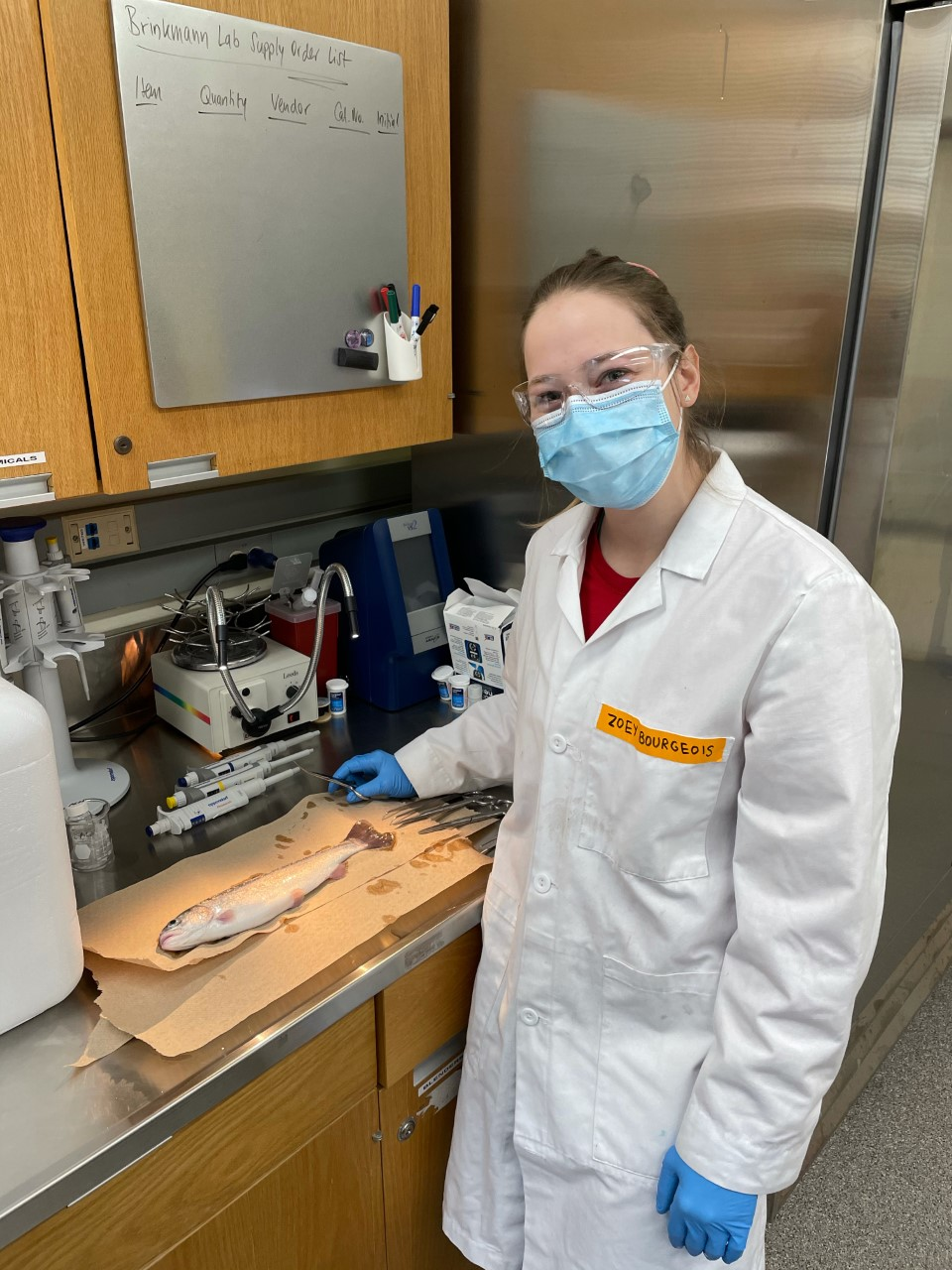
Zoey Bourgeois
Curiosity & camaraderie
Undergraduate student, Lacy Smith, decided to pursue research work before completing her Toxicology degree to be exposed to the realities of employment in the field while gaining valuable lab experience. She was supervised by Dr. Natacha Hogan. “My research was focused on working with cells, so that included taking care of the cell line, preparing groundwater samples to expose the cells to, and then considering how the groundwater was affecting cell viability and gene expression,” Lacy describes. Time in the lab allowed a hands-on learning experience, learning to cope with the natural ups and downs of the research process – which did not follow her original research plan. In the final stages, Lacy presented her project at the Toxicology Undergraduate Research Symposium.
“I think to be a good researcher, you have to be curious, eager to learn, and willing to fail and try again,” she describes. “I definitely brought the curiosity and willingness to learn to my project from the beginning but learning that failure is a part of research was a lesson I had to learn.”
She credits the team — supervisor, lab manager and graduate students — that stood behind her as she progressed with research work. “The best part of my research was getting to work so closely with such an intelligent, inspiring group of women,” Lacy says.
The connections between the student researcher and the larger support and co-working team create a sense of community and belonging that can be pivotal to a research experience. As all experts know, it is not possible for one person to know everything. Collectively, a team will almost always deliver stronger results than any one individual. They can be there to support and challenge each other to adapt in times of uncertainty, a very applicable skill during a research project undertaken during global pandemic conditions.
“I’ve learned that I can encounter setbacks without letting it discourage me,” Lacy says. “Reach out to your professors! There are so many amazing professors and researchers at USask who are very willing to share their knowledge with students."
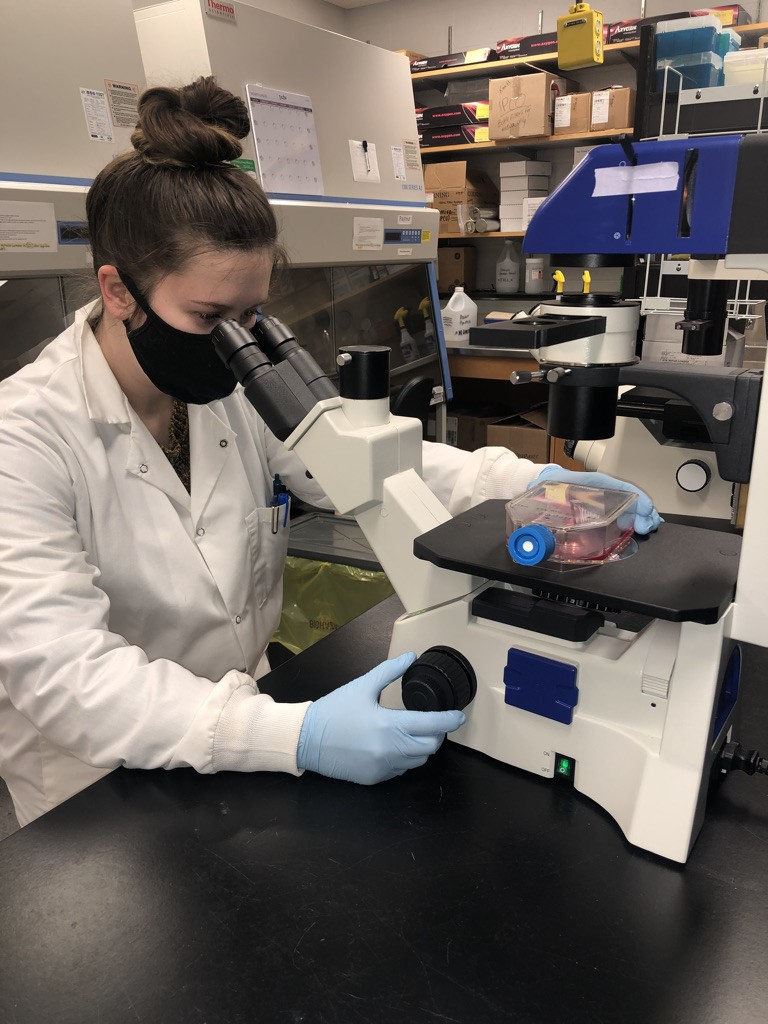
Lacy Smith
Growth & dreams of graduate school
Toxicology student, Summer Selinger, chose to partake in an undergraduate research project, supervised by Dr. Natacha Hogan, to hone her skills before applying to graduate school. “I thought it would be an excellent way to gain experience working in the lab, as well as to apply all the knowledge I obtained over the course of my [undergraduate] degree, to better understand the research process and what the graduate school experience is like.”
Summer’s project focused on examining the effects of lead nitrate exposure on the growth, development and lifespans of Xenopus laevis frogs and tadpoles. Summer says her undergraduate research work confirmed her intention to apply to graduate school to pursue a Master’s degree in Toxicology. Pursuing an undergraduate research project allowed Summer to gain technical skills and confidence in lab work beyond those offered in undergraduate lab courses.
“I have learned how fit I think I am to work in research,” she says. “In the past, I have always been one to simply ask ‘What?’ rather than ‘Why?’ and ‘How?’ This is the main reason I enjoyed this research project so much, as it allowed me to fully understand every aspect of the process and why we were doing the project the way we were, from the objective to the significance to the methodology.”
Summer also learned a fantastic lesson in the world of research: asking for help when you need it.
“I have learned I need to continue to improve my communication skills, and although it is great to be independent, it is important to communicate with your lab members and supervisor as they are there to guide and teach you,” Summer advises. Reaching out for guidance on multiple occasions “resulted in me not only gaining advice and knowledge I otherwise would have missed, but also helped me to feel more comfortable communicating with others.”
Summer emphasizes that students need only reach out to their professors or lab instructors to discover how eager they are (when able) to help provide research experiences and contacts to students. Being curious enough to ask the question is the crucial step to discover what potential opportunities may exist for undergraduates to try their hand at research work.
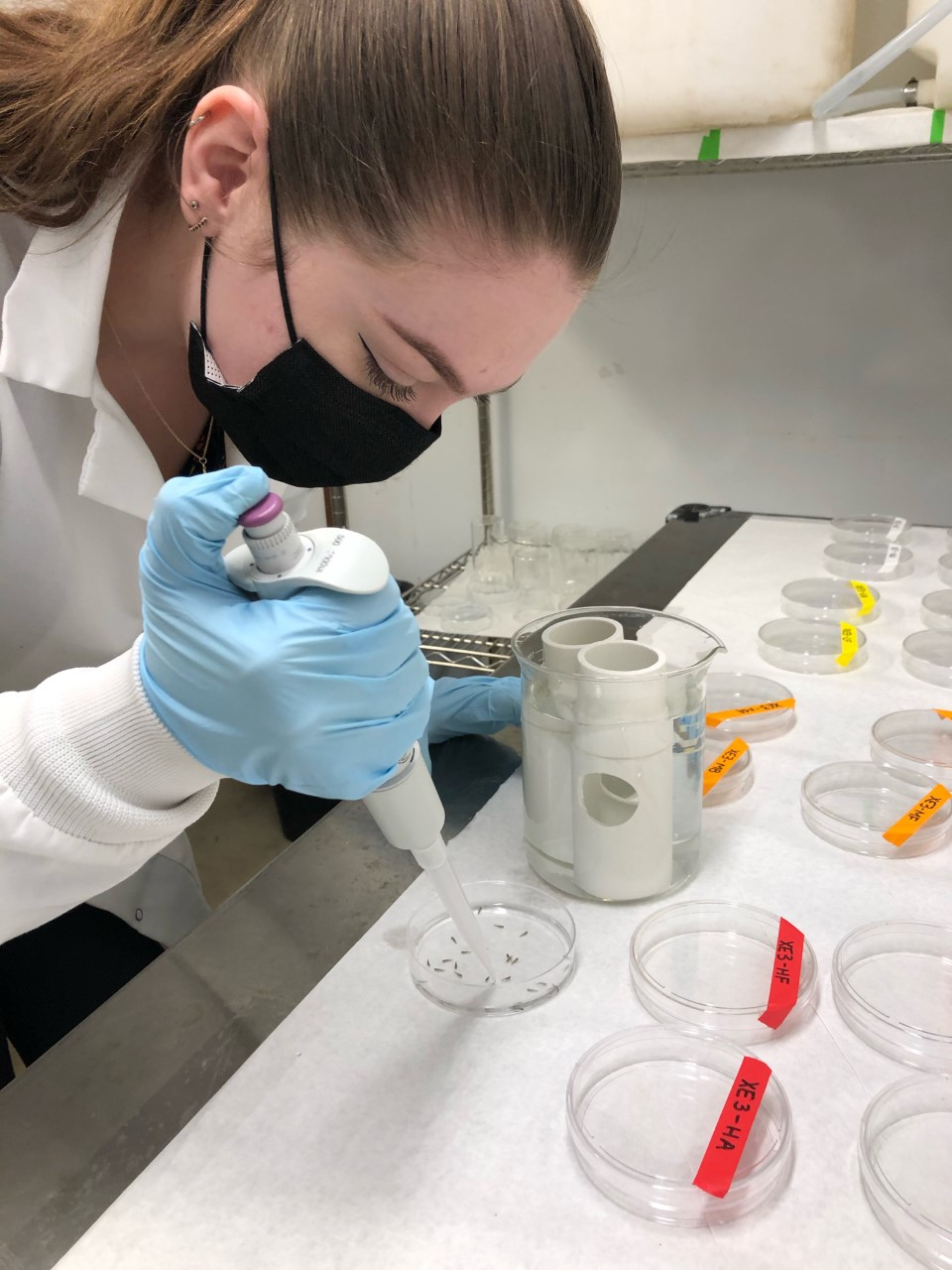
Summer Selinger
Inquiry & innovation
Romaisa Ismaeel found inspiration in the COVID-19 pandemic. “After seeing the efforts of researchers around the world trying to formulate a vaccine against SARS-CoV-2, I was inspired to take on a research project of my own. I’ve always been very inquisitive, and this was a way to entertain my curiosity beyond the classroom,” Romaisa describes. “I expected to gain a better appreciation for the process of innovation and learn skills that I otherwise would not learn through my undergraduate degree.”
Sometimes, the biggest hurdle to doing research is technical. During data collection, Romaisa’s project did not lend itself to the technology that was currently available in the lab; she and her supervisor took on the challenge of re-fitting existing equipment to serve their purpose.
“I am using an Ussing Chamber with fish epithelium and there is not much literature describing this application of the Ussing Chamber, so it was difficult to troubleshoot irregularities in the apparatus,” she says. When asked how she overcame the issues that arose with data collection, she says the key was staying positive in the face of unexpected challenges. “Perseverance is essential to being a good researcher. The thing about scientific endeavor is that sometimes the experiments don’t work the way we have hoped. It is important to be able to look past these shortcomings and continue to try again. It really goes to show that we can discover not only more about the world but also about ourselves through science!”
Undertaking an undergraduate research project contributed to Romaisa’s overall student experience by helping her to develop hands-on experience in her field while developing collaboration and communication skills. She says her supervisor, Dr. Markus Brinkmann, fostered a supportive environment by stressing the importance of learning from the process rather than the end results. The freedom to explore allowed Romaisa to apply creativity and think outside the box to drive innovation in her field.
What advice would she give to students interested in undergraduate research? Don’t simply take opportunities — create them. “If there isn’t a research project that is being offered, speak to a professor and express your interest. Genuine enthusiasm can go a long way and that professor might be able to find a research project” that will have room to include you.
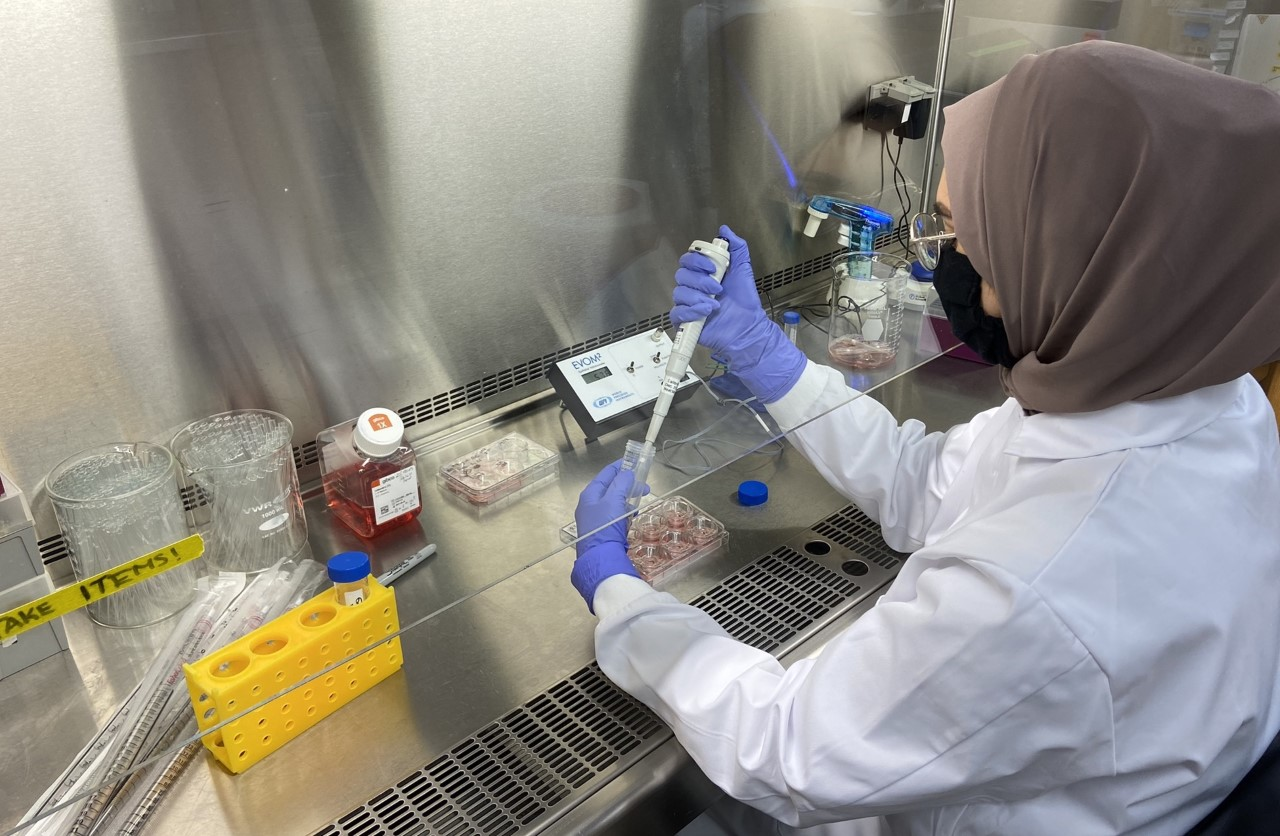
Romaisa Ismaeel
Passing the torch
An undergraduate research experience works on two fronts: researching and contributing to a particular field, and fostering personal growth and skills. These four undergraduate student researchers have been influential ambassadors in the growing movement to increase the number of women in STEM fields. They all provide examples of how students have continually displayed extraordinary resilience in the face of uncertainty for the last academic year.
For now, these four students plan to continue championing the benefits of undergraduate research and encouraging others to partake in research activities whenever possible. As Romaisa says, “This is my first research project, but it certainly will not be my last!”

